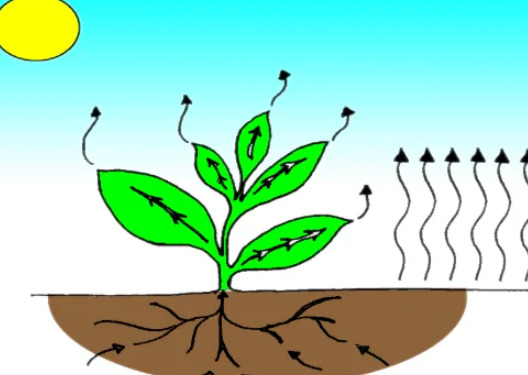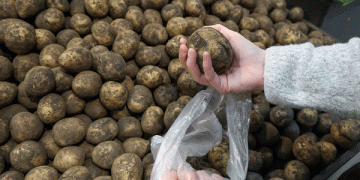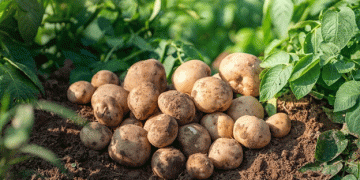#Potatostorage #Transpirationrates #Temperature #Humidity #Arrheniusequation #Post-harvestlosses #Croppreservation #Agriculturalscience #Farmingoptimization
While a multitude of factors impact potato storage, one crucial aspect is the rate of transpiration, which directly affects the water content of potatoes. By understanding the influences of temperature and humidity on transpiration rates, farmers, agronomists, agricultural engineers, farm owners, and agricultural scientists can optimize potato storage conditions to extend the shelf life and minimize losses.
According to a recent study published in the Journal of Agricultural Science, researchers aimed to develop reliable models to estimate potato water loss during storage. They recognized the significance of temperature and humidity in transpiration and incorporated the Arrhenius equation, a powerful tool used to analyze the effect of temperature on reaction rates.
The study collected extensive data on potato water loss across a wide range of temperatures and humidity levels. Through meticulous analysis, the researchers observed distinct patterns in transpiration rates based on the varying storage conditions. By utilizing the Arrhenius equation, they were able to establish predictive models that accurately estimate potato water loss at different temperatures and humidity levels.
The findings revealed that temperature and humidity significantly influence transpiration rates in potato storage. As temperature increased, the rate of water loss accelerated, with higher temperatures leading to more rapid deterioration of potato quality. Similarly, humidity played a critical role, as higher humidity levels helped maintain the water content of potatoes, thereby preserving their texture and nutritional value.
Optimal potato storage conditions, as suggested by the study, involve maintaining a temperature range between 4°C and 8°C (39°F and 46°F) and a relative humidity of approximately 95%. These conditions promote a slower rate of transpiration, preventing excessive water loss and extending the storage life of potatoes.
This groundbreaking research highlights the importance of temperature and humidity control in potato storage. By harnessing the power of Arrhenius equation-based models, farmers, agronomists, agricultural engineers, farm owners, and scientists can optimize storage conditions to mitigate water loss and maintain the quality of potatoes. Implementing these insights promises to reduce post-harvest losses and enhance overall profitability in the potato industry.






